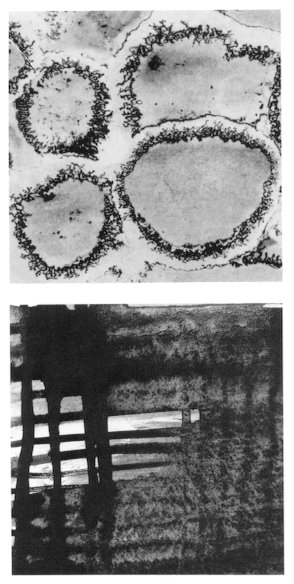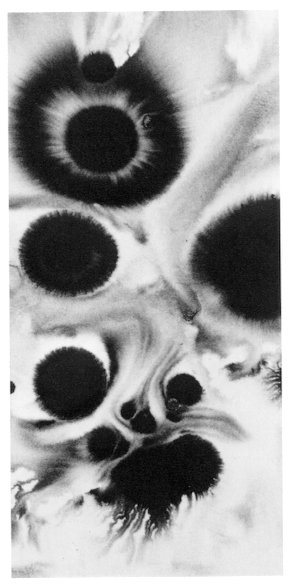|
1 -- Creation of accident configurations Development of infinite numbers of shapes through intelligent operations is mostly clarified through the discussions in the previous sections. Most shapes handled by this are geometrical configurations. However, there are various shapes other which have attractive and modern sensitivities as well. For example, an emotion of a violent life is sometimes felt in shapes of the ink which scatter from a broken ink bottle. It hangs down from the canister and flows and the paint hardens into layers. Something mental is also felt in these flowing shapes of paints which flow out from the edge of a canister and are solidified in many layers. We sometimes feel attracted to these shapes as modern shapes. Moreover, we may have a mysterious feeling in a shape of black paper which was been burned, scorched, and carbonized. The active uses of these non-concrete configurations which belong to a category of such a non-fixed form is a phenomenon which is characteristic of art in the 20th century. These have been succeeded by many artists from uniform schools and super-reality schools to present schools. Then, among these techniques, let's seek the possibility of modeling by focusing the drawing techniques using accidents.
The purpose of modeling techniques using accidents is to create an unexpected shape. This
technique depends on a phenomenon like an accident occurring by chance such as the destruction of
an ink bottle, the flow of paint, and carbonization of paper as previously described. The more unique
the method, the more unique shapes are created. The larger unexpectedness is, the stronger we feel
mysteries and inscrutabilities in those shapes.
|

